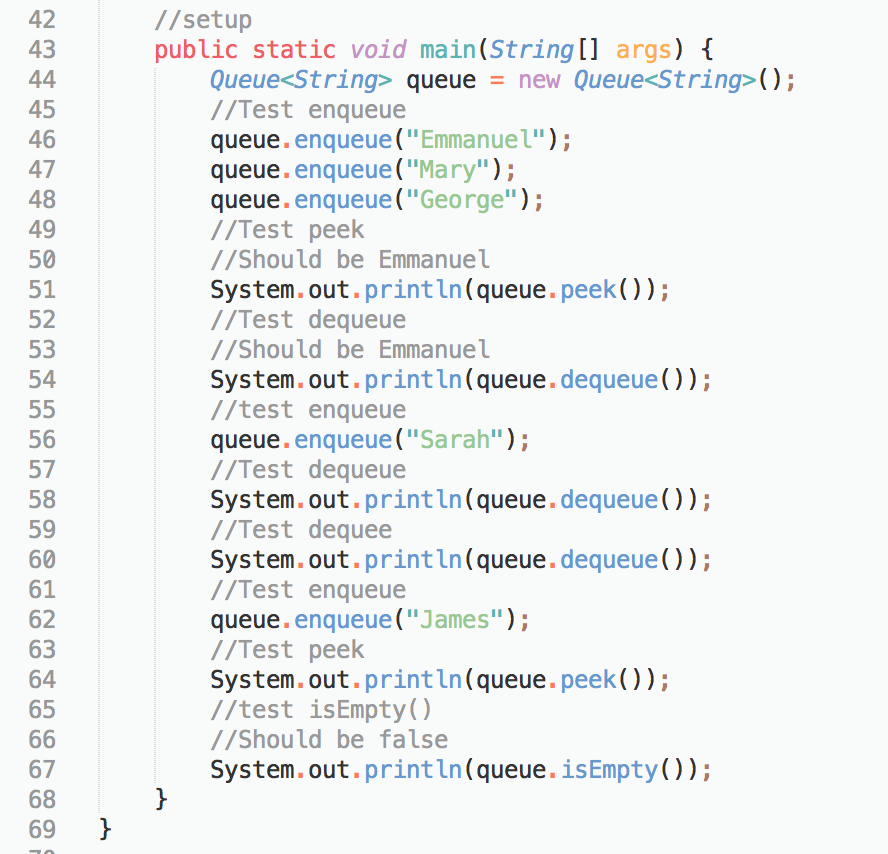
The message is the data transported between the sender and the receiver. A queue of messages is placed between two parts of the system in order for them to communicate with each other. The Message Broker achieves this by using a Message Queue to provide a persistent mechanism. The broker in this case is used to implement or facilitate the round-the-clock messaging of data between the consumers and the producers.
#JAVA QUEUE SOFTWARE#
The broker concept is also applicable when integrating enterprise application systems that are made up of many heterogeneous software components that need to exchange information such as transactions and notification events. For instance, a mortgage broker helps match borrowers to financial institutions offering the most affordable loans based on the borrower’s financial situation and interest-rate needs. They can represent the buyer or the seller, but not both at the same time. The broker’s main role is to make it easier for a transaction to occur. Whether it is buying shares from a securities exchange, buying real estate, or even purchasing a car, in everyday transactions brokers are prevalent across many business domains.

They act as the intermediary between the buyer and the seller. Most of us have at some point had to use the services of a broker when executing transactions. Comparison Chart: Java Message Queue vs Kafka vs RabbitMQ.How Does Java Message Queue Stack Up Against Kafka & RabbitMQ?.Advantages and Disadvantages of Using Java Message Queue.Publisher/Subscriber (Pub/Sub) Messaging Model.This post seeks to help message queue administrators, application developers, and other parties who are interested in using Java Message Queue, RabbitMQ, or Kafka to understand and differentiate the technologies, concepts, architecture, capabilities, and features behind these products. They all serve the same basic purpose but can go about their jobs differently. Int func (suffix expression) 1.Java Message Queue, RabbitMQ, and Kafka are all messaging technologies used to facilitate asynchronous communication in distributed systems. Remove all parentheses, and the result is the corresponding pre suffix expression Method summary: from left to right, add additional parentheses according to the priority of operators (pay attention to the problem of parentheses), and move each corresponding operator outside the corresponding parentheses. So you don't have to draw the operation stack every time like the first question Put the operation symbol outside the bracket according to the operation priority Suffix expression: put the operator behind

Prefix expression: put the operator in front

There is an infix expression of a*(b-(c+d)), and its suffix expression can be: A If m wants to think of a stack, it must let x out of the stack, so it is impossible to get out of the stack orderĮvil tip: infix expression to suffix expression Given that the stacking sequence of a stack is m, n, x, y, z., the impossible stacking sequence is: C

Last in first out Įvil tip: reasonable stack order (draw stack diagram) Stack out: the stack deletion operation is called stack out, and the data is also at the top of the stack Stack pressing: stack insertion / stack pushing / stack pressing, and the input data is at the top of the stack The data elements in the stack follow the LIFO principle The end where data is inserted and deleted is called the top of the stack and the other end is called the bottom of the stack. Insert and delete elements are only allowed at the fixed end. A special linear table shows the relationship between precursor and successor.


 0 kommentar(er)
0 kommentar(er)
